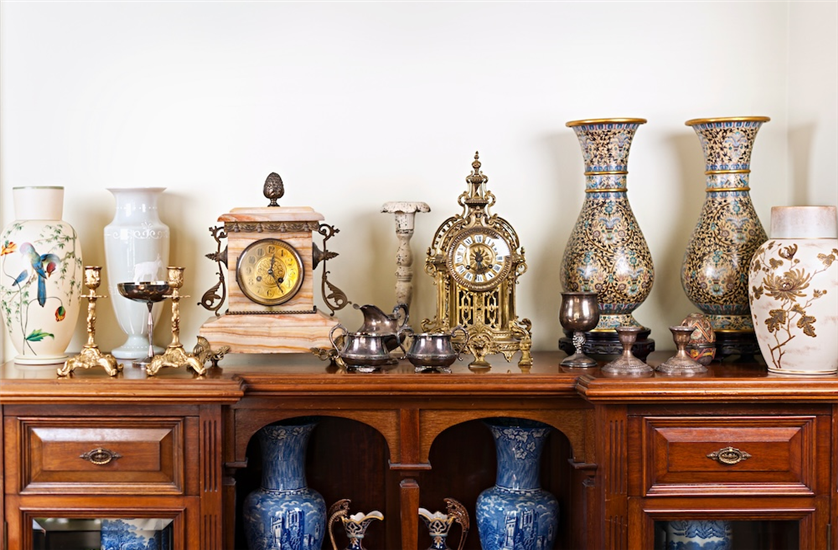
So you’re dipping your toe into antiquing and want to start your collection. It’s a fascinating hobby that allows you to collect unique things and own small pieces of history.
In this blog, we will explore what qualifies as an antique, the different types of antiques that you can collect, and how to identify authentic antiques.
What qualifies as an antique?
When collecting antiques, it’s important to know what items are classed as “antique”.
Many people use the terms vintage and antique interchangeably, but they have different meanings. Vintage covers items between 20 and 100 years old, whereas antique items are over 100 years old. Both vintage and antique items can be valuable and collectable; however, there is a certain allure to antique items with over a century of history, which adds further to their value.
The different types of Antiques
Antiques can come in many forms, with historical significance and appeal. Some of the most popular items consist of:
Art—From sculptures to paintings, the antique world offers a lot of art that provides value and beauty. When looking into antique art, you should pay attention to the artist’s signature and the piece's condition, which can dramatically affect its value.
Jewellery—Many antique styles feature unique designs and precious materials like gold, silver, and gemstones. Edwardian, Victorian, and Art Deco pieces are popular among antique collectors.
Furniture—Furniture can range from dining tables and chairs to bedside tables and chest of drawers. Each period reflects a unique but identifiable style. Most antique furniture is made of solid wood that has been intricately carved.
Building your collection
Beginning your antique collection is exciting, but if you’re overwhelmed by the countless categories and don’t know where to start, here are some helpful tips.
1. Choose a focus
Choose a particular type of antique or period; it will help make searching for items to build your collection more manageable.
2. Don’t forget to set a budget
Depending on the type, antiques can range from affordable to extremely expensive. Setting a budget allows you to make informed decisions, avoid overspending, and feel confident in your collection.
3. Attend antique fairs and auctions
Getting involved in these events is the best way to learn more about antiques. You will learn from experienced collectors and dealers while looking for items to add to your collection.
Identifying authentic Antiques
You’ll want to make sure that the antiques in your collection are authentic, and it can be difficult for beginners to establish what is genuine and what is not.
For instance, look for signs of wear and tear consistent with the item's age or research the maker's marks to verify the item's origin and age. Some items may have been restored, which can sometimes bring the value down.
Another indicator of authenticity is looking for craftsmanship—authentic antiques will have handcrafted details with slight imperfections. These details can help you identify which period your antique is from.
Learn how to identify Edwardian antiques here.
You can also look for maker marks on antique pieces. These are crucial to verifying an item's origin and age.
Unlock the past with your antiques
Immersing yourself in antiques opens doors to a world of rich history and artistry. While building your collection, you will develop a keen eye for quality and details and an understanding of different trends throughout the eras.
Remember, if you feel overwhelmed by all the different kinds of antiques you can collect, you can do a couple of things to help make it easier when getting started. Choose a specific type or period of antiques, and set a budget for yourself. Don’t be afraid to learn from experienced antique collectors at antique fairs and auctions.
As you build your collection, you create a personal archive that reflects your tastes and interests, ensuring that each antique you acquire is a cherished piece of history.




